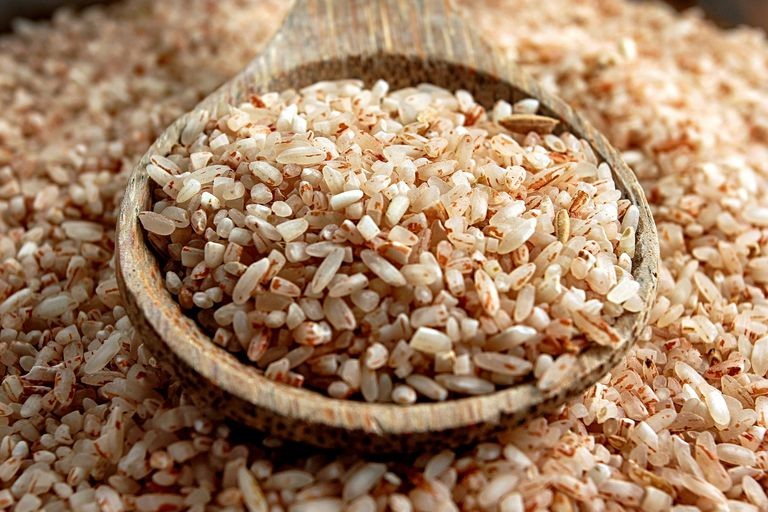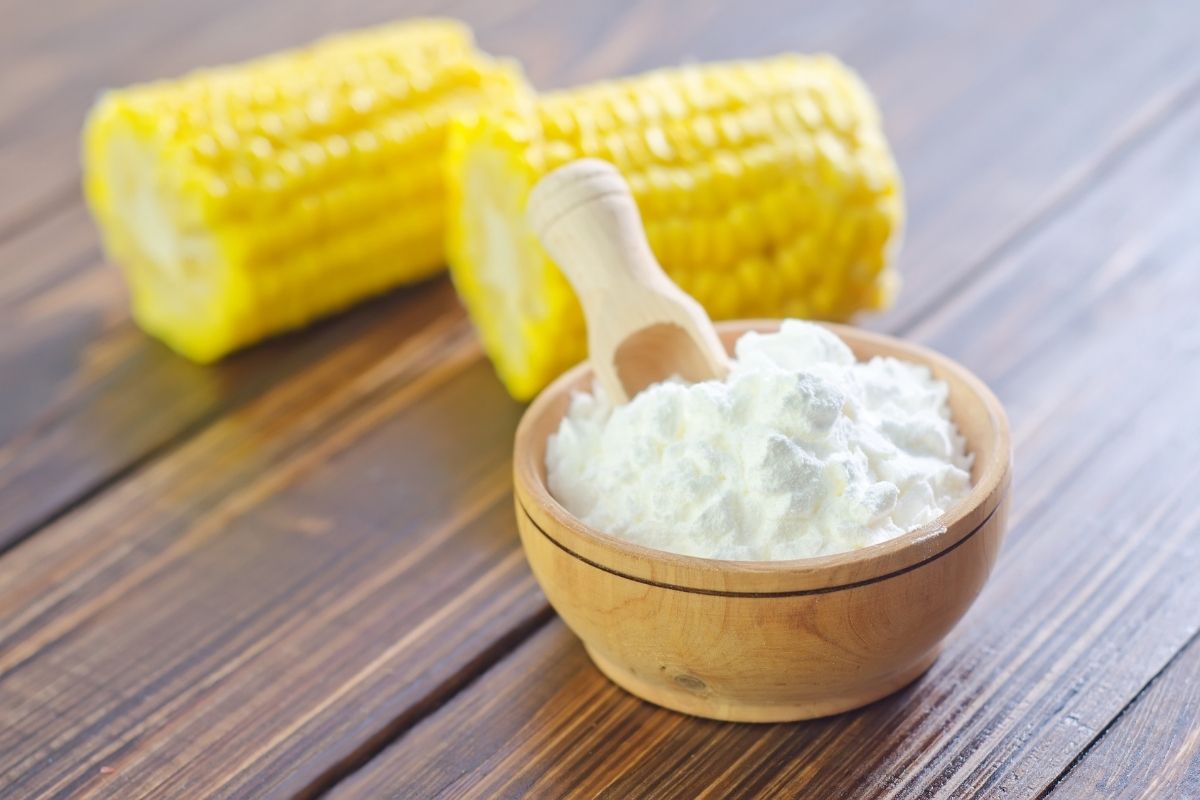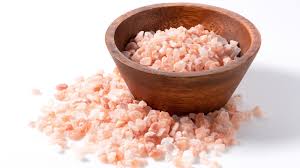The Global Staple: Rice
In kitchens and dining tables across continents, rice serves as a unifying factor, bringing people together in various culinary traditions. Its role as a global staple is undisputed. Found in an array of local dishes, it embodies not just sustenance, but also the culture and history of regions. Its versatility in recipes, ranging from simple comfort foods to gourmet delicacies, makes it a favorite ingredient for cooks worldwide.
As you embark on this culinary journey, you’ll discover that rice is not just a humble grain, but a powerhouse of nutrition and flavor. Different types of rice harbor unique profiles that lend themselves to a variety of dishes, enabling culinary enthusiasts to expand their repertoire and explore new flavors and textures. As we delve deeper, we aim to equip you with the knowledge that will allow you to navigate through the rich and diverse world of rice with ease and confidence.
Understanding the diversity among various types of rice can significantly elevate your culinary skills. Whether it’s selecting the perfect grain for a fluffy pilaf or a sticky dessert, the choice of rice can make a marked difference. This guide seeks to be your companion in this exploration, unveiling the intricate world of rice in all its glorious variety. Join us as we traverse the grain fields of the world, unraveling the secrets behind each type of rice.
Section 1: Understanding Rice Fundamentals
1.1 The Cultivation of Rice
Rice cultivation, a practice deeply rooted in human history, has evolved over millennia to cater to the growing global demand. Different geographical regions foster unique varieties of rice, each boasting its distinct characteristics. Understanding the cultivation process, from sowing to harvesting, can offer insights into the factors that contribute to the diverse spectrum of rice varieties found in the market today.
The methods and techniques applied in rice cultivation have a significant influence on the ultimate flavor and texture of the grain. From the flooded paddies that nurture varieties like Jasmine and Basmati to the dry terrains fostering wild rice, the cultivation process is an intricate dance between nature and nurture. Learning about these methods not only brings you closer to the grain but also helps in appreciating the hard work and dedication that goes into bringing rice from the fields to your table.
Climate plays a pivotal role in determining the success of rice cultivation. Certain types of rice thrive in specific conditions, making them exclusive to particular regions. This regional exclusivity often translates into unique culinary traditions centered around locally available rice varieties. As we explore the cultivation of rice further, we’ll uncover how different climates have given birth to a rich variety of rice, each catering to distinct flavor profiles and culinary applications.
1.2 Nutritional Benefits of Rice
Rice is not merely a source of carbohydrates. Different varieties come packed with a range of nutrients including fibers, vitamins, and minerals. White rice, often considered less nutritious compared to its counterparts, still offers a substantial energy source, making it a staple in many diets worldwide. On the other hand, brown rice retains its bran layer, providing a higher fiber content and a range of nutrients, including magnesium and phosphorus, which are essential for maintaining a healthy body.
As we step into the colorful world of red and black rice, we encounter a treasure trove of antioxidants that are known for their health benefits. These rice varieties not only add a vibrant hue to your dishes but also bring along a host of nutritional advantages. Being rich in antioxidants, they can potentially help in warding off various diseases, promoting a healthy heart, and supporting overall wellbeing.
Navigating through the nutritional labyrinth of rice varieties might seem daunting, but armed with the right knowledge, it can transform your dining experience. Understanding the nutritional profile of different rice types can aid in making informed choices that align with your dietary preferences and health goals. Whether you are aiming for a low-carb diet or seeking to increase your fiber intake, the world of rice offers options aplenty to cater to your needs.
1.3 The Significance of Rice in Different Cultures
To appreciate the true essence of rice, one must delve into its cultural significance that transcends borders. In many Asian countries, rice is not just a part of every meal but also holds a sacred place in various ceremonies and festivals. It symbolizes life and fertility, and is often associated with prosperity and abundance. Through generations, traditions revolving around rice have forged bonds and fostered community relationships.
As we traverse continents, we find that the significance of rice extends beyond Asia. In countries across Africa, the Americas, and Europe, rice forms the backbone of many traditional dishes. From the Spanish Paella, a rich medley of rice with meats and seafood, to the West African Jollof rice, vibrant with spices and flavors, the grain finds itself at the center of culinary innovations and traditions, binding communities with its comforting presence.
Rice also finds its way into arts and literature, symbolizing various facets of life and human emotions. In this section, we aim to paint a vivid picture of the cultural tapestry woven with threads of rice traditions from around the world. From folklore to festivals, we explore how rice has embedded itself into the heart of communities, narrating stories of heritage, unity, and culinary excellence through its diverse presence in global cuisines.
Section 2: Different Types of Rice and Their Characteristics
2.1 White Rice
White rice, often seen as the quintessential type of rice, holds a prominent place in many cuisines. Its delicate flavor makes it a versatile choice, capable of adapting to a myriad of flavors and ingredients. Within the umbrella of white rice, we find an array of subtypes including Jasmine, Basmati, and Arborio, each boasting a unique personality. While Jasmine rice, native to Thailand, offers a fragrant aroma and a slightly sticky texture, Basmati rice, predominantly found in Indian and Pakistani cuisines, is known for its long, slender grains and a nutty fragrance.
Diving deeper, we explore the culinary wonders that can be created with white rice. The fluffy and aromatic Basmati rice serves as the perfect base for a spicy biryani or a rich curry, absorbing the flavors and spices to create a harmonious dish. On the other hand, Arborio rice, with its high starch content, is the star ingredient in creamy and luxurious risottos, a staple in Italian cuisine. Its ability to absorb a significant amount of liquid makes it the perfect choice for dishes that are rich and full-bodied.
The nutritional profile of white rice varies among its different types. While it is often considered to be less nutritious due to the removal of the bran and germ, it still holds a place of importance in a balanced diet. Fortified white rice varieties are also available, offering an enhanced nutrient profile. As we explore the nutritional aspects of white rice, we aim to provide you with the information necessary to incorporate this versatile grain into your diet in a way that aligns with your health and wellness goals.
2.2 Brown Rice
Brown rice, often hailed as a healthier alternative to white rice, retains its bran layer, a treasure trove of nutrients and fibers. This whole grain variant stands as a robust pillar in the health-conscious culinary world. Its mildly nutty flavor and chewy texture make it a favorite in salads and bowls, where it can shine as a wholesome and satisfying ingredient. Moreover, its ability to keep you fuller for longer periods has made it a popular choice among individuals aiming for weight management or pursuing a fiber-rich diet.
As we venture into the culinary potential of brown rice, we encounter a fascinating array of subtypes, such as short-grain and long-grain brown rice. The short-grain variety offers a slightly sticky texture post-cooking, making it an excellent option for dishes where a bit of clumpiness is desired, like sushi or certain types of desserts. Long-grain brown rice, conversely, provides a fluffier texture, with grains remaining separate, making it suitable for salads and pilafs where distinct grains are preferred.
But the brown rice narrative extends beyond just its texture and culinary uses; its rich nutritional profile makes it a standout choice for health enthusiasts. Being a good source of magnesium, phosphorus, selenium, and several B vitamins, it complements a healthy diet effectively. Additionally, the high fiber content promotes better digestion and can aid in preventing various health issues, including heart diseases and type 2 diabetes. As we further explore brown rice, we aim to help you unveil new avenues to incorporate this wholesome grain into your daily meals, providing both health benefits and culinary delight.
2.3 Wild Rice
Wild rice, a distant relative of the traditional rice varieties, brings to the table a robust and somewhat earthy flavor profile. Native to North America, this grain, often found growing in water bodies, offers a unique culinary experience. Its chewy outer sheath and tender inner grain create a delightful texture contrast, making it a premium choice for gourmet dishes. Moreover, its rich, nutty flavor makes it a standout ingredient in salads, stuffings, and casseroles, offering a burst of flavor and texture that can elevate any dish.
As we delve deeper into the world of wild rice, we uncover a series of culinary techniques and recipes that bring out the best in this grain. Its absorbent nature allows it to soak up flavors beautifully, making it an excellent base for herb-infused pilafs or rich and creamy risottos. Furthermore, wild rice pairs wonderfully with a range of ingredients, from fresh vegetables and herbs to meats and seafood, enabling the creation of diverse and vibrant dishes that please both the palate and the eye.
However, the allure of wild rice is not limited to its culinary versatility alone; it also boasts an impressive nutritional profile. High in protein and fiber, it supports a healthy diet effectively. Moreover, it is a rich source of antioxidants, which can help in combating oxidative stress and promoting overall health. As we navigate through the world of wild rice, we aim to equip you with the insights and inspiration to incorporate this luxurious grain into your culinary ventures, promising both health benefits and gourmet satisfaction.
2.4 Red and Black Rice
Entering the colorful spectrum of red and black rice, we venture into a realm where rice is more than just a side dish; it becomes a centerpiece of culinary artistry. Red rice, with its rustic hue and nutty flavor, brings a splash of color and a burst of nutrients to your plate. Its rich anthocyanin content, a powerful antioxidant, not only gives it its characteristic color but also offers significant health benefits, including potential protection against heart diseases and certain cancers.
Black rice, often referred to as ‘forbidden rice,’ carries a history as rich as its nutrient content. Once reserved for royalty, this exquisite grain is now available for culinary enthusiasts to explore and enjoy. Its deep black-purple hue, attributed to the high anthocyanin content, turns into a beautiful indigo when cooked, adding a touch of drama and luxury to your dishes. Moreover, its slightly sweet flavor makes it a favorite in both savory dishes and desserts, offering a unique twist to traditional recipes.
But the journey with red and black rice does not end with their vibrant hues and rich flavors; it extends into their impressive nutritional profiles. Both these varieties are packed with fibers, vitamins, and minerals, promising a hearty and nutritious meal. Moreover, their high antioxidant content can play a significant role in promoting overall health, supporting a healthy heart, and aiding in disease prevention. As we explore these colorful rice varieties further, we aim to inspire you to bring a splash of color and a burst of nutrients to your table, promising a culinary experience that is both delightful and nourishing.
Section 3: Culinary Applications
3.1 Rice in Main Course Dishes
In the realm of culinary arts, rice stands as a versatile ingredient, seamlessly finding its way into an array of main course dishes across cultures. Its adaptability allows it to soak up the flavors of the dish, making it a star player in a range of recipes. From the spicy and aromatic biryanis of the Indian subcontinent to the comforting and warm risottos of Italy, rice forms the heart of many gastronomic delights, promising both satisfaction and nourishment.
In Asian cuisines, rice often takes center stage, offering a canvas for a spectrum of flavors and textures. Whether it’s the delectable sushi rolls of Japan, where the slightly sticky texture of rice pairs beautifully with fresh seafood and vegetables, or the famed Thai curries where rice serves as a perfect counterbalance to the rich and spicy gravies, rice plays a pivotal role in bringing the dish together, promising a harmonious culinary symphony.
But the culinary journey with rice extends beyond Asia, finding its pride of place in cuisines across the world. In the Americas, dishes like gumbo and jambalaya showcase rice’s ability to harmonize with a variety of ingredients, creating a comforting and hearty meal. As we explore the various main course dishes starring rice, we aim to inspire you to unleash your culinary creativity, exploring the diverse and delicious possibilities that rice brings to your table.
3.2 Rice in Desserts
The culinary versatility of rice is perhaps most brilliantly showcased in the plethora of desserts that are created using this humble grain. Rice finds itself transformed into a variety of sweet delights, offering a comforting end to meals. Across cultures, rice forms the basis of many traditional desserts, from the creamy rice puddings of Europe to the sweet and sticky rice cakes of Asia, each promising a taste of heritage and tradition.
In Indian cuisine, rice takes a sweet avatar in dishes like Kheer, a creamy dessert where rice pairs beautifully with milk and cardamom, offering a comforting and fragrant delight. In the Philippines, rice takes center stage in desserts like Biko, a sticky rice cake sweetened with coconut milk and sugar, offering a bite of tradition and celebration.
But the journey with rice desserts extends beyond traditional recipes, finding its way into modern culinary innovations. Chefs and home cooks alike are experimenting with rice, creating contemporary desserts that promise a burst of flavors and textures. From rice flour cakes to rice-based ice creams, the possibilities are endless. As we explore the sweet world of rice desserts, we aim to offer you inspiration and ideas to create your sweet symphony, promising both satisfaction and delight.
3.3 Rice in Snacks and Appetizers
Rice transcends the boundaries of main courses and desserts to find its place in an array of snacks and appetizers. Its versatility is showcased brilliantly in the variety of snacks that can be created using rice as a primary ingredient. From the crispy rice crackers of East Asia to the stuffed rice balls of Italy, rice promises a delightful start to any meal, offering both taste and texture in every bite.
In Japanese cuisine, rice finds itself transformed into crispy and savory rice crackers, offering a delightful crunch that pairs beautifully with a cup of green tea. In Italy, rice takes center stage in appetizers like Arancini, where rice balls are stuffed with a variety of fillings, coated with breadcrumbs, and fried to golden perfection, promising a burst of flavors and textures.
But the world of rice snacks and appetizers extends beyond traditional recipes. Innovations in the culinary world have given rise to a range of rice-based snacks that cater to modern palates. From rice cakes topped with a variety of toppings to rice flour being used to create gluten-free snacks, the possibilities are vast and varied. As we explore the vibrant world of rice snacks and appetizers, we aim to inspire you to venture into uncharted culinary territories, promising both creativity and delight.
Section 4: Tips and Techniques for Cooking Rice
4.1 Choosing the Right Type of Rice
Choosing the right type of rice can significantly influence the outcome of your dish. Different recipes require specific varieties of rice to achieve the desired texture and flavor. When embarking on a culinary adventure with rice, understanding the characteristics of different types of rice can be a game-changer. From the long-grained and aromatic Basmati to the short-grained and sticky sushi rice, each variety brings its unique attributes to the dish.
Understanding the origin and characteristics of different types of rice not only helps in achieving the desired culinary results but also adds depth and authenticity to your dishes. For instance, choosing Arborio rice for your risotto ensures a creamy and luxurious texture, while opting for Jasmine rice in your Thai curry promises a fragrant and delightful experience.
As we venture deeper into the world of rice, we aim to equip you with the knowledge and insights to choose the right type of rice for your culinary creations. Whether it’s understanding the nuances of different rice varieties or learning about the perfect pairing of rice with other ingredients, this section seeks to be your guide in making informed and inspired choices, promising a culinary journey that is both enriching and delightful.
4.2 Perfecting the Cooking Technique
Once the right type of rice has been chosen, the next crucial step is mastering the art of cooking it to perfection. Different types of rice require varied cooking techniques to achieve the desired results. Whether it’s achieving the perfect fluffiness for your pilaf or the right stickiness for your sushi, mastering the cooking technique can significantly enhance your culinary experience.
Understanding the water-to-rice ratio is a critical aspect of achieving the perfect texture. While white and jasmine rice might require less water, brown and wild rice usually require a higher water-to-rice ratio due to their tougher texture. Additionally, learning about the different cooking methods, from boiling to steaming and even baking, can help you achieve the desired results, promising a dish that is both visually appealing and gastronomically satisfying.
As we delve into the techniques of cooking rice, we aim to offer you insights and tips to perfect your skills. Whether it’s learning about the different utensils that can aid in achieving the perfect texture or uncovering the secrets behind the fluffiest rice, this section seeks to be your companion in your culinary journey with rice, promising both knowledge and success in your culinary endeavors.
4.3 Storage and Leftover Ideas
Rice, being a staple in many households, often finds itself in larger quantities than needed, giving rise to the need for proper storage and creative leftover ideas. When it comes to storing cooked rice, ensuring that it is cooled quickly and stored in an airtight container can significantly increase its shelf life, allowing you to enjoy it for a longer period.
But the journey with leftover rice doesn’t end with storage; it extends into a world of culinary creativity where leftover rice can be transformed into a variety of dishes.
From fried rice bursting with fresh vegetables and savory bits of meat to hearty soups and salads, leftover rice serves as a canvas for culinary innovation. It finds a renewed life in breakfast dishes, like rice pancakes where mashed leftover rice forms a beautiful base, allowing for a filling and nutritious start to the day.
Furthermore, leftover rice can be a great addition to fritters, providing a hearty and chewy texture that contrasts beautifully with the crispy outer layer. In the realm of desserts, leftover rice can find its way into rice pudding, creating a creamy and comforting delight that can satisfy your sweet cravings. Moreover, leftover rice can serve as a wonderful filler in stuffed vegetables, combining with other ingredients to create a flavorful and satisfying filling.
As we explore the various ways to utilize leftover rice, we aim to inspire you to view it not as a by-product but as a stepping stone to new culinary adventures. This section promises to equip you with creative and delightful recipes to transform your leftover rice into gastronomic delights, ensuring zero wastage and maximum enjoyment.
Conclusion
In conclusion, rice, the humble grain, stands tall as a culinary giant, offering a world of flavors, textures, and culinary possibilities. Its versatility is reflected in its varied types, each offering a unique characteristic that can enhance a dish. From its colorful varieties to its many applications in dishes spanning from main courses to desserts, rice promises a culinary journey that is both enriching and delightful.
As we venture into the diverse world of rice, we find it transforming into delightful dishes that cater to varied palates and preferences. Its role in culinary arts transcends boundaries, finding its place in kitchens across the world, uniting people through a shared love for this humble yet versatile grain.
Through this comprehensive guide, we hope to have instilled a deeper appreciation for rice and inspired you to explore its vast and varied culinary world. We invite you to embark on a gastronomic journey with rice, promising delightful experiences and culinary satisfaction.




